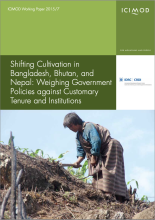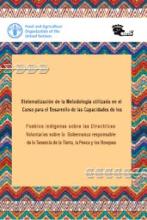/ library resources
Showing items 1 through 9 of 21.Shifting cultivation is a dominant form of farming in the eastern Himalayas, practised by a diverse group of indigenous people from the most marginalized social and economic groups. The survival of these indigenous people and the survival of their forests are inextricably linked.
En 2016, el Centro para la Autonomía y el Desarrollo de los Pueblos Indígenas (CADPI), junto con el equipo de Pueblos Indígenas de FAO y el apoyo técnico del equipo de Tenencia de la Tierra de FAO, implementaron un programa de desarrollo de capacidades para y con los pueblos indígenas de Mesoamér
Small forest and farm producers manage a third of the world’s forests. Together, these smallholder families, indigenous people and local communities are the world’s largest investors in forests.
The Government of South Africa has a major holding of forest land, with a total estate covering 892,000 ha of forest and associated land.
The United Nations Declaration on the Rights of Indigenous Peoples was adopted by the UN General Assembly on 13 September 2007.
On the occasion of the International Year of Mountains-2002, FAO and its partners undertook a large-scale assessment and global review of the current status and future trends of integrated and participatory watershed management.
Con ocasión del Año Internacional de las Montañas (2002), la Organización de las Naciones Unidas para la Agricultura y la Alimentación (FAO) y sus asociados emprendieron una sistematización mundial en gran escala de la situación actual y futuras tendencias de la gestión integrada y participativa
Pagination
Land Library Search
Through our robust search engine, you can search for any item of the over 73,000 highly curated resources in the Land Library.
If you would like to find an overview of what is possible, feel free to peruse the Search Guide.



